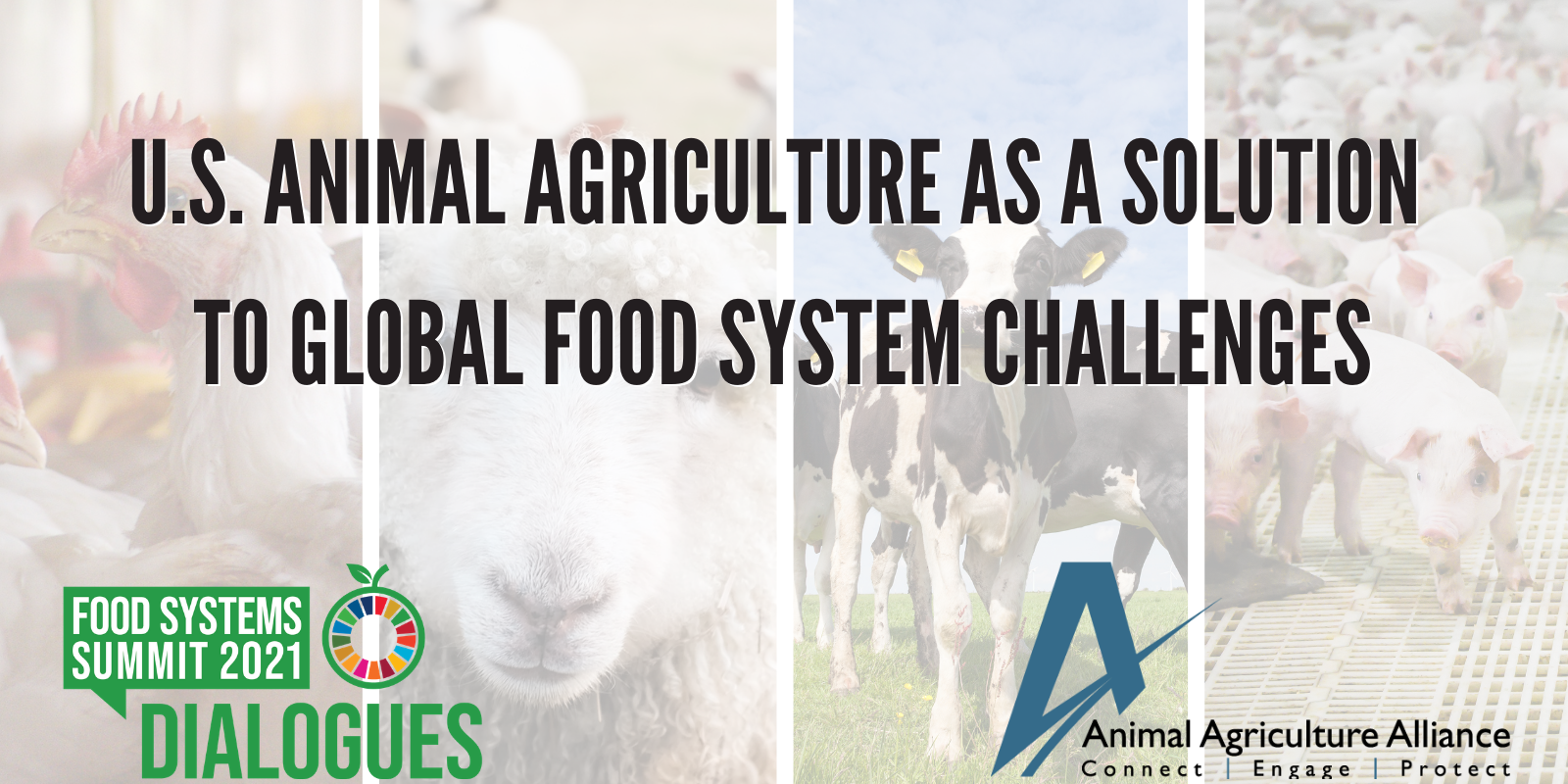The U.S. animal agriculture community is highly engaged in the work of the United Nations Food Systems Summit (FSS) and has a track record of progress and ambitious commitments that align with the FSS’ focus on enhancing sustainability. Over the past six months, I’ve learned so much about the UN framework and international food systems as the Animal Agriculture Alliance team has followed the FSS closely to find opportunities for our members to engage.
Through all of this, I’ve become more confident than ever that Americans today have access to one of the safest, most diverse, and most affordable food supplies in history. American agricultural and food products feed millions of people around the world – thanks in large part to the efficiency, productivity, and innovation of the U.S. agriculture and food supply chain alongside the United States’ robust science- and risk-based regulatory system. I believe the FSS can have a positive impact on not only the future of our own U.S. food system but the global system, as well.
Earlier this month, the Alliance took the chance to contribute to the FSS by convening an Independent Dialogue event titled “U.S. Animal Agriculture as a Solution to Food Systems Challenges.” This Dialogue brought together stakeholders from across the U.S. animal agriculture community to engage meaningfully, explore collectively and emerge resiliently for sustainable food systems. Through engagement and discussion, the Dialogue considered animal agriculture’s role in achieving the Sustainable Development Goals and ability to deliver progress across all five Action Tracks of the FSS.
FSS Independent Dialogue Takeaways
It was thrilling and energizing to hear the diverse perspectives presented during the Dialogue event. The participants were truly committed to innovation and positioning animal agriculture as a leader in shaping the sustainable food system of the future. Key themes of the conversations included:
- Sustainability must not be viewed as a single, exclusive destination, but rather as a diverse, continuous, and inclusive journey.
- The U.S. animal agriculture community (from farm to fork and beyond) is among the most sustainable in the world (based on life cycle assessments, increases in productivity, reductions in GHG, and other data-based measurements of sustainability).
- All stakeholders, across many different areas of expertise, different production systems, and different sizes, can and must find commonalities and work productively together.
- Optimizing animal agriculture’s environmental impact is an ambitious but attainable goal, which can only be achieved via sustained, long-term active participation of all stakeholders with a goal of constant innovation and improvement.
- Food systems must become more sustainable while also ensuring continued sufficient nutrient-dense food supplies that are safe, accessible, affordable, and appropriate to diverse consumer needs.
Check out the full Outcomes Report if you’d like to read more about the discussion.
I left the Dialogue event even more optimistic about the future of animal agriculture and its role in a sustainable food system. However, we still have considerable work to do in both achieving our ambitious goals and telling our sustainability story. I hope you’ll join the Alliance and our members in both efforts.
All posts are the opinion of the author and do not necessarily represent the view of the Animal Ag Alliance.








